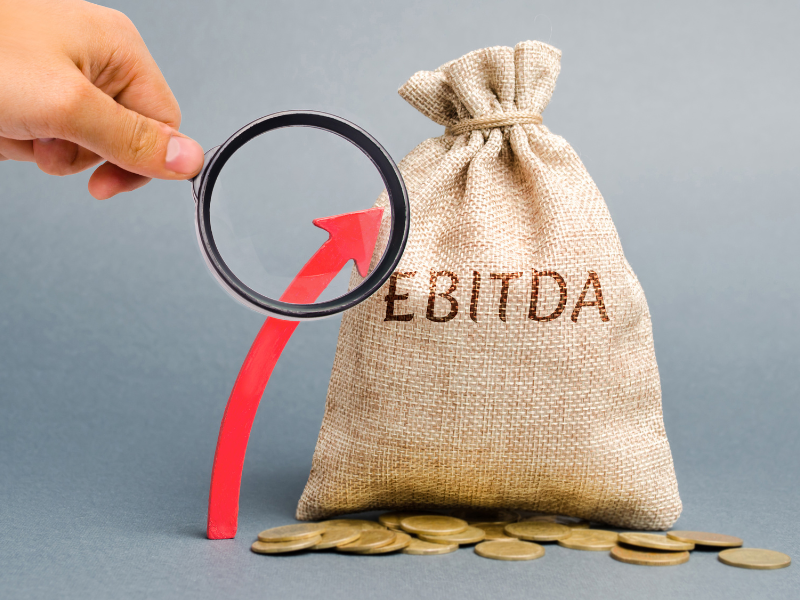When it comes to measuring business performance, there’s no shortage of financial metrics to consider. But one metric stands out as a powerful tool for assessing operational profitability—EBITDA (Earnings Before Interest, Taxes, Depreciation, and Amortization).
At Ravix Group, we know that financial clarity is the foundation of strong business decisions. That’s why we’re breaking down what EBITDA is, how to calculate it, and why it matters for startups, growing businesses, and investors alike.
What Is EBITDA?
EBITDA is a measure of a company’s profitability that focuses solely on its core operations, stripping away external financial factors like interest, taxes, and non-cash expenses such as depreciation and amortization.
Think of it this way: EBITDA isolates the financial engine of your business, showing how efficiently it generates profit from day-to-day operations.
Formula: EBITDA = Net Income + Interest + Taxes + Depreciation + Amortization
By removing interest payments (which depend on financing decisions), taxes (which vary by location and structure), and non-cash expenses like depreciation and amortization (which relate to accounting rules rather than cash flow), EBITDA offers a clearer picture of operational performance.
Why Does EBITDA Matter?
1. Business Valuation & Investor Interest
Investors and potential buyers often rely on EBITDA when evaluating a company. Since it focuses on core profitability, EBITDA provides a common ground for comparing businesses across industries—helping assess their true earning potential.
Example: If startups in your sector typically sell for 5x EBITDA, and your company’s EBITDA is $1 million, your business could be valued around $5 million in an acquisition scenario.
2. Assessing Operational Efficiency
EBITDA can reveal how efficiently a company runs its daily operations, without the noise of tax structures or financing choices. By tracking EBITDA over time, businesses can spot trends, pinpoint inefficiencies, and make data-driven decisions to optimize performance.
3. Loan & Debt Considerations
Lenders and creditors use EBITDA to gauge a company’s ability to service debt. The debt-to-EBITDA ratio is a key metric that determines a business’s borrowing capacity and financial stability.
4. Industry Benchmarking & Comparisons
Because EBITDA removes financing and tax-related distortions, it allows for apples-to-apples comparisons between businesses in the same industry. Whether you’re raising capital, preparing for a sale, or assessing your competition, knowing your EBITDA helps you see where you stand.
Let’s connect to explore how Ravix can help you track and improve the metrics that matter most.
EBITDA in Action: A Simple Example
Let’s say XYZ Coffee Roasters wants to calculate its EBITDA for the past quarter to assess its operational profitability. Here are its financials:
| Particulars | Amount |
| Total Revenue | $450,000 |
| Cost of Goods Sold (COGS) | $180,000 |
| Operating Expenses | $90,000 |
| Net Income | $160,000 |
| Interest Payments | $5,000 |
| Tax Payments | $15,000 |
| Depreciation & Amortization | $10,000 |
Using the formula:
EBITDA = 160,000 (net income) + $5,000 (interest) + $15,000 (taxes) + $10,000 (depreciation & amortization)
XYZ Coffee Roasters’s EBITDA = $190,000
What This Means for XYZ Coffee Roasters
- XYZ Coffee Roasters generated $190,000 from core operations before accounting for taxes, interest, and non-cash expenses.
- This number helps compare profitability with other coffee companies, regardless of their tax rates or financing structures.
- Investors or lenders might use this figure to determine the company’s ability to repay debt or expand operations.
Takeaway: EBITDA provides a clear picture of how efficiently a company operates—a crucial insight for growth planning, financial forecasting, and strategic decision-making.
EBITDA vs. Other Financial Metrics
EBITDA is a useful tool, but it’s not the only measure of business health. Here’s how it compares to other key metrics:
| Metric | What It Measures | Key Difference from EBITDA |
| Net Income | Profit after all expenses | Includes taxes, interest, and depreciation |
| Gross Profit Margin | Revenue minus cost of goods sold | Ignores operating expenses |
| Operating Cash Flow | Cash generated by operations | More comprehensive but includes changes in working capital |
Takeaway: EBITDA is a valuable metric, but it should always be analyzed alongside other financial indicators to get a full picture of a company’s financial health.
Limitations of EBITDA
Despite its advantages, EBITDA isn’t perfect. Here are a few things to keep in mind:
- It can be manipulated: Businesses can adjust depreciation methods or exclude one-time expenses to inflate EBITDA.
- It ignores debt and capital costs: High EBITDA doesn’t mean a company is in great financial shape if it’s drowning in debt.
- It’s not GAAP-compliant: EBITDA is a non-GAAP metric, meaning companies can report it differently.
Lesson learned? EBITDA is a strong profitability metric, but it’s not a substitute for looking at cash flow, net income, and balance sheet health.
Final Thoughts: How EBITDA Helps Your Business Grow
Understanding EBITDA isn’t just for investors or accountants—it’s a powerful tool for any business owner. Whether you’re scaling your startup, preparing for funding, or optimizing operations, EBITDA helps you:
✓ Compare your performance against industry peers
✓ Identify areas for operational improvement
✓ Communicate financial strength to investors and lenders
✓ Make informed strategic decisions
Ready to optimize your financial strategy? At Ravix, we provide financial and accounting services to guide businesses through every stage of growth, providing expert financial insights to help you scale with confidence. Schedule a call today.

